Many farmers and contractors buying a secondhand tractor tend to look to the 2000 to 2006 era or what many refer to as a modern working classic, for example the New Holland TM range, Massey Ferguson 6400 series and the 6020 John Deere series.
The latest technology and electronic comforts may not be within everyone’s budgets or needs. Some might argue that these modern classics are the ‘sweet spot’ in terms of balance between electronics and mechanics.
The John Deere 6020 is certainly considered a series of modern working classics among Irish farmers and contractors. Good examples continue to steadily appreciate, regardless of hours, many surpassing the 10,000 and even 15,000 mark.
A good example will be quickly snapped up, regardless of hours.
The 6320, 6620 and 6920 are reckoned to have been the most popular models sold here on the Irish market.
The 6020 series was launched in September 2001 as a successor to the 6010 series. Production spanned from late 2001 to 2006.
The series included 10 models at launch, five of which had four-cylinder engines. These included the 6120 (80hp), 6220 (90hp), 6320 (100hp), 6420 (110hp) and 6420S (120hp), all fitted with a 4.5l PowerTech engine.
The six-cylinder models consisted of the 6520 (115hp), 6620 (125hp), 6820 (135hp), 6920 (150hp) and 6920S (160hp), all equipped with the 6.8l PowerTech engine.
Depending on the models, all premium tractors offered three main transmission types, the standard being the four-speed power shift, five-range 20F/20R PowrQuad Plus option. Second was the AutoQuad II (standard on S models along with 10hp boost), offering all the same features as PowrQuad with the addition of a switchable auto shift and cruise control function.
The AutoPowr CVT transmission was offered on the 6420 upwards, excluding the 6520. The two latter options were available in either 40km/h or 50km/h specification, as well as the option of an economy mode on AutoQuad tractors.
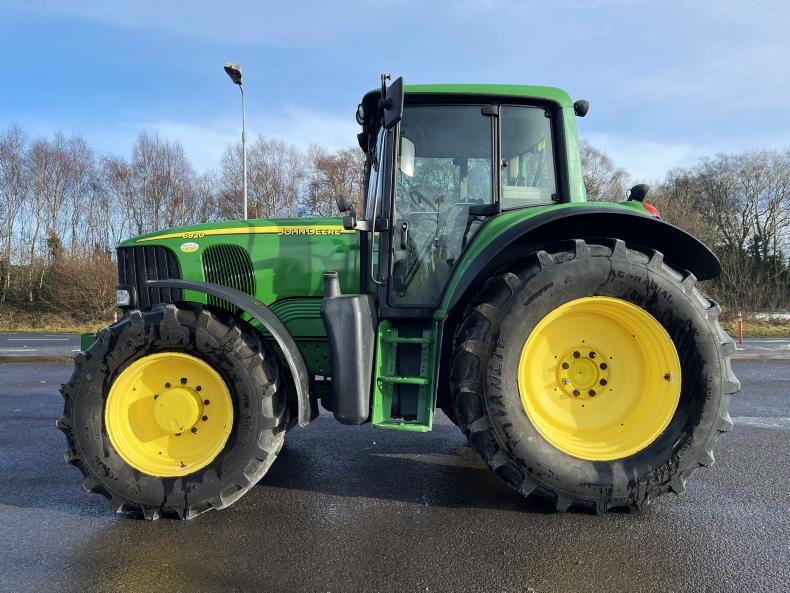
The overall condition of the tractor should be assesed for faults.
At launch, all tractors were offered as premium specification or premium-plus AutoPowr models. Premium models, including the 6320 upwards, featured hydraulic cab suspension (HCS), the first of the John Deeres to be fitted with a permanently active self-levelling cab offering 100mm of travel.
Later in 2003, seven more basic SE models were introduced, which included the 6020 SE (75hp), 6120 SE, 6220 SE, 6320 SE, 6420 SE and 6520 SE and 6620 SE.
As of January 2003, all 6020 series tractors from 100hp to 160hp transitioned to high-pressure common rail injection technology and a four-valve cylinder head, which brought about slight power increases and notable increases in torque.
Condition and background
Like any tractor of this era, genuine low-hour examples will be hard to come by and if they do appear on the market, rest assured they’ll come at a price.
The general advice is to assess the tractor based on its condition and other factors such as service history or previous owners more so than the clock reading, which at this point pretty much becomes irrelevant. Often, the tractor you know with 10,000 hours is better than the one you don’t at 8,000 hours.
The 6920 pictured is a prime example. With over 14,700 hours on the clock, it would easily pass for a tractor with half its hours. This gives the impression that the previous owner(s) maintained the tractor well cosmetically and more than likely mechanically too, as it earned its keep.
The advantage of buying through a John Deere dealer is that the tractor is likely a local trade-in, meaning that the machine’s background can be easily obtained, including who owned it and the work it has been subject to.
Any reputable dealer should be able to inform a customer of the tractor’s history, but such information may often not be as easily gathered if dealing privately.
Knowing the type of work the tractor spent most of its life at can be a good indication.
For example, a tractor predominantly used for haulage work would indicate that the hitch and brakes are two particular areas worth inspecting for wear. Equally, on a tractor fitted with a front loader, two areas worth inspecting are the loader itself and front axle condition.
Engine and transmission
If possible, check service logs or warranty details. It may be helpful to carry out some background research on the particular model for updates and changes over the years.
An example of this is to find out when common-rail injection was introduced (January 2003) so that you know you’re buying an arguably more sought-after common rail model. Matching the engine number to the engine number on the log book will also indicate if it is still the original block.
Start the engine cold, as this is the time unwanted noises can be heard most. Listen out for any rough or knocking sounds.
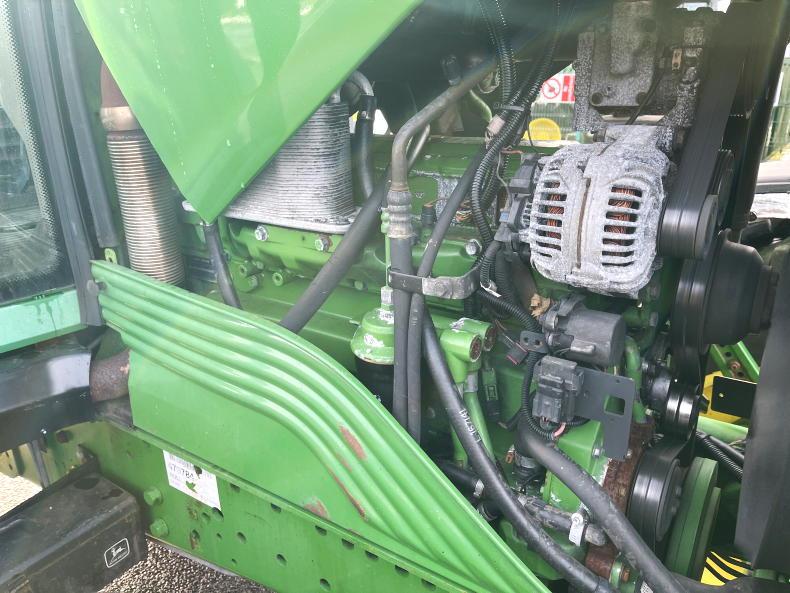
Check the engine bay for leaks and obvious signs that the engine has been worked on, if so raise the question as to why.
Inspect the engine bay after powering off for any evidence of leaks or telltale signs the engine has been worked on (for example, paint removed from bolt heads, etc).
It is also worth inspecting engine fluids to make sure that all levels are correct and there are no signs of mixing, ie oil mixing with coolant or vice versa, which would indicate potential head gasket failure.
Drive the tractor when cold, testing all gears and power shifts, as this is the time a rough shift can be best felt. On Auto Quad models, test that the auto shift function is working and that speed matching is also working.
Slippage within gears can indicate clutch wear and is worth investigating. Power shift buttons located on top of the gear lever tend to wear out. The best cure for this is to replace the gear lever which will cost around €71 plus VAT.
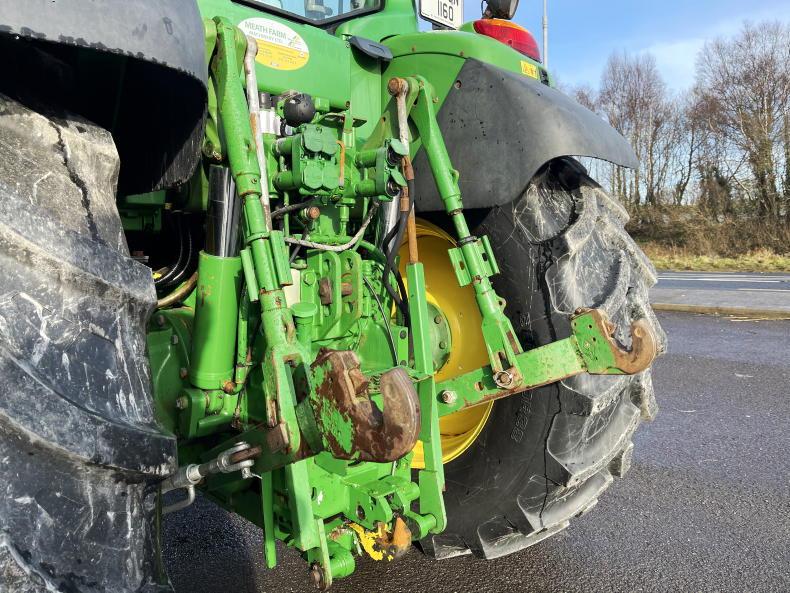
Check the overall condition of the back end including pto, linkage, spools and the hitch.
Back end and axles
The back end of a 6020 series tractor is a fairly trouble-free area. Start by checking hitch and lift arm condition. Depending on hours, the hitch may have been refurbished or replaced, so check for wear and that the locking mechanism is engaging properly.
A tractor that has done quite a bit of linkage or draft work may need its rockshaft (shaft between linkage arms) replaced. This full procedure including labour will cost in the region of €2,900 plus VAT. Check that all spools are working correctly and that the PTO is engaging. If stated that the tractor is original and untouched, check that this is the case around the back end, as well as under the cab.
If there are telltale signs that work or repair has been carried out and not stated, maybe raise the question with the seller as to why.
Assess brake condition. Do this while the tractor is warm and listen out for a grinding or similar sound. If unsure as to when they were replaced last, then it is worth building this into the price of the tractor for complete peace of mind.
Given that Deere uses a single oil supply for the back end brakes and transmission, it is crucial that discs are changed on or before time to prevent the possibility of metal shavings passing through and creating untold trouble.
Brake replacement including oil, oil seals, transmission and hydraulic filters, including labour, will cost €1,500 plus VAT.
If buying a front loader or TLS model, check condition of both for signs of wear around linkage and pivot points. Although TLS is regarded as a very reliable suspension system, check the condition of track rod ends and that both 4wd and the diff-lock engages and disengages.
Cab
The condition of a cab can tell a lot. Firstly, assess pedal and seat condition. Does the level of wear on either correlate with engine hours?
The Grammar air seat over time will naturally show signs of wear or start leaking air. A new genuine seat will cost in the region of €850 plus VAT.
A loose steering column with no adjustment will indicate that the gas strut has failed. This is an inexpensive repair and worth sorting before further damage is done. Obviously, everything should be working in the cab if stated and there should be no sign of error codes.
Check the condition of the exhaust and its shield. It is not uncommon for the shield on 6020 models to become loose, start rattling and break off. Exhausts on higher-hour examples will eventually burn out and need replacement.
It is worth knowing exactly what the tractor needs both mechanically and cosmetically, so that it can be factored into the budget or buying price.
If buying from a dealer it is worth making them aware of what the tractor needs to be put right, ie toplink, new exhaust, etc, so that this can either be included or agreed in the deal.
Equally, if the tractor is in need of repair it is important that this is known and its price reflects this.
6020 series spec
Number of models: 10 premium/premium plus and 7 SE.Horsepower range: 75hp-160hp.Production start and end: 2001-2006.Predecessor: 6010 series.Successor: 6030 series.
Many farmers and contractors buying a secondhand tractor tend to look to the 2000 to 2006 era or what many refer to as a modern working classic, for example the New Holland TM range, Massey Ferguson 6400 series and the 6020 John Deere series.
The latest technology and electronic comforts may not be within everyone’s budgets or needs. Some might argue that these modern classics are the ‘sweet spot’ in terms of balance between electronics and mechanics.
The John Deere 6020 is certainly considered a series of modern working classics among Irish farmers and contractors. Good examples continue to steadily appreciate, regardless of hours, many surpassing the 10,000 and even 15,000 mark.
A good example will be quickly snapped up, regardless of hours.
The 6320, 6620 and 6920 are reckoned to have been the most popular models sold here on the Irish market.
The 6020 series was launched in September 2001 as a successor to the 6010 series. Production spanned from late 2001 to 2006.
The series included 10 models at launch, five of which had four-cylinder engines. These included the 6120 (80hp), 6220 (90hp), 6320 (100hp), 6420 (110hp) and 6420S (120hp), all fitted with a 4.5l PowerTech engine.
The six-cylinder models consisted of the 6520 (115hp), 6620 (125hp), 6820 (135hp), 6920 (150hp) and 6920S (160hp), all equipped with the 6.8l PowerTech engine.
Depending on the models, all premium tractors offered three main transmission types, the standard being the four-speed power shift, five-range 20F/20R PowrQuad Plus option. Second was the AutoQuad II (standard on S models along with 10hp boost), offering all the same features as PowrQuad with the addition of a switchable auto shift and cruise control function.
The AutoPowr CVT transmission was offered on the 6420 upwards, excluding the 6520. The two latter options were available in either 40km/h or 50km/h specification, as well as the option of an economy mode on AutoQuad tractors.

The overall condition of the tractor should be assesed for faults.
At launch, all tractors were offered as premium specification or premium-plus AutoPowr models. Premium models, including the 6320 upwards, featured hydraulic cab suspension (HCS), the first of the John Deeres to be fitted with a permanently active self-levelling cab offering 100mm of travel.
Later in 2003, seven more basic SE models were introduced, which included the 6020 SE (75hp), 6120 SE, 6220 SE, 6320 SE, 6420 SE and 6520 SE and 6620 SE.
As of January 2003, all 6020 series tractors from 100hp to 160hp transitioned to high-pressure common rail injection technology and a four-valve cylinder head, which brought about slight power increases and notable increases in torque.
Condition and background
Like any tractor of this era, genuine low-hour examples will be hard to come by and if they do appear on the market, rest assured they’ll come at a price.
The general advice is to assess the tractor based on its condition and other factors such as service history or previous owners more so than the clock reading, which at this point pretty much becomes irrelevant. Often, the tractor you know with 10,000 hours is better than the one you don’t at 8,000 hours.
The 6920 pictured is a prime example. With over 14,700 hours on the clock, it would easily pass for a tractor with half its hours. This gives the impression that the previous owner(s) maintained the tractor well cosmetically and more than likely mechanically too, as it earned its keep.
The advantage of buying through a John Deere dealer is that the tractor is likely a local trade-in, meaning that the machine’s background can be easily obtained, including who owned it and the work it has been subject to.
Any reputable dealer should be able to inform a customer of the tractor’s history, but such information may often not be as easily gathered if dealing privately.
Knowing the type of work the tractor spent most of its life at can be a good indication.
For example, a tractor predominantly used for haulage work would indicate that the hitch and brakes are two particular areas worth inspecting for wear. Equally, on a tractor fitted with a front loader, two areas worth inspecting are the loader itself and front axle condition.
Engine and transmission
If possible, check service logs or warranty details. It may be helpful to carry out some background research on the particular model for updates and changes over the years.
An example of this is to find out when common-rail injection was introduced (January 2003) so that you know you’re buying an arguably more sought-after common rail model. Matching the engine number to the engine number on the log book will also indicate if it is still the original block.
Start the engine cold, as this is the time unwanted noises can be heard most. Listen out for any rough or knocking sounds.

Check the engine bay for leaks and obvious signs that the engine has been worked on, if so raise the question as to why.
Inspect the engine bay after powering off for any evidence of leaks or telltale signs the engine has been worked on (for example, paint removed from bolt heads, etc).
It is also worth inspecting engine fluids to make sure that all levels are correct and there are no signs of mixing, ie oil mixing with coolant or vice versa, which would indicate potential head gasket failure.
Drive the tractor when cold, testing all gears and power shifts, as this is the time a rough shift can be best felt. On Auto Quad models, test that the auto shift function is working and that speed matching is also working.
Slippage within gears can indicate clutch wear and is worth investigating. Power shift buttons located on top of the gear lever tend to wear out. The best cure for this is to replace the gear lever which will cost around €71 plus VAT.

Check the overall condition of the back end including pto, linkage, spools and the hitch.
Back end and axles
The back end of a 6020 series tractor is a fairly trouble-free area. Start by checking hitch and lift arm condition. Depending on hours, the hitch may have been refurbished or replaced, so check for wear and that the locking mechanism is engaging properly.
A tractor that has done quite a bit of linkage or draft work may need its rockshaft (shaft between linkage arms) replaced. This full procedure including labour will cost in the region of €2,900 plus VAT. Check that all spools are working correctly and that the PTO is engaging. If stated that the tractor is original and untouched, check that this is the case around the back end, as well as under the cab.
If there are telltale signs that work or repair has been carried out and not stated, maybe raise the question with the seller as to why.
Assess brake condition. Do this while the tractor is warm and listen out for a grinding or similar sound. If unsure as to when they were replaced last, then it is worth building this into the price of the tractor for complete peace of mind.
Given that Deere uses a single oil supply for the back end brakes and transmission, it is crucial that discs are changed on or before time to prevent the possibility of metal shavings passing through and creating untold trouble.
Brake replacement including oil, oil seals, transmission and hydraulic filters, including labour, will cost €1,500 plus VAT.
If buying a front loader or TLS model, check condition of both for signs of wear around linkage and pivot points. Although TLS is regarded as a very reliable suspension system, check the condition of track rod ends and that both 4wd and the diff-lock engages and disengages.
Cab
The condition of a cab can tell a lot. Firstly, assess pedal and seat condition. Does the level of wear on either correlate with engine hours?
The Grammar air seat over time will naturally show signs of wear or start leaking air. A new genuine seat will cost in the region of €850 plus VAT.
A loose steering column with no adjustment will indicate that the gas strut has failed. This is an inexpensive repair and worth sorting before further damage is done. Obviously, everything should be working in the cab if stated and there should be no sign of error codes.
Check the condition of the exhaust and its shield. It is not uncommon for the shield on 6020 models to become loose, start rattling and break off. Exhausts on higher-hour examples will eventually burn out and need replacement.
It is worth knowing exactly what the tractor needs both mechanically and cosmetically, so that it can be factored into the budget or buying price.
If buying from a dealer it is worth making them aware of what the tractor needs to be put right, ie toplink, new exhaust, etc, so that this can either be included or agreed in the deal.
Equally, if the tractor is in need of repair it is important that this is known and its price reflects this.
6020 series spec
Number of models: 10 premium/premium plus and 7 SE.Horsepower range: 75hp-160hp.Production start and end: 2001-2006.Predecessor: 6010 series.Successor: 6030 series. 








 This is a subscriber-only article
This is a subscriber-only article







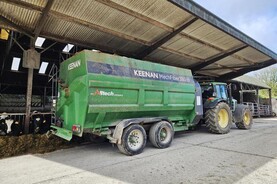
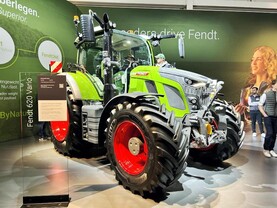
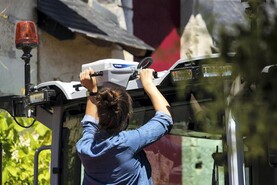

SHARING OPTIONS: